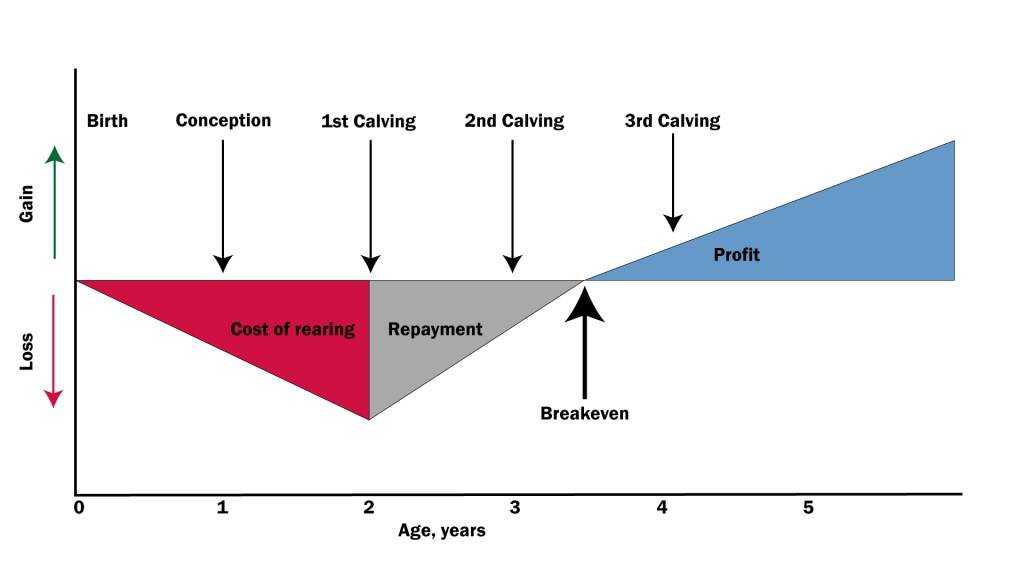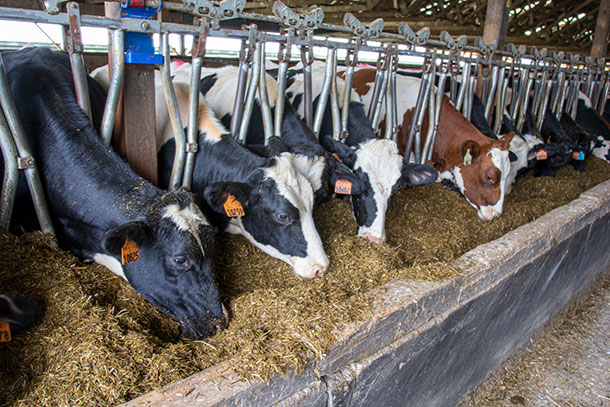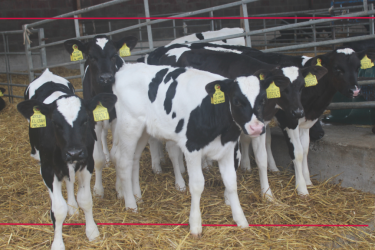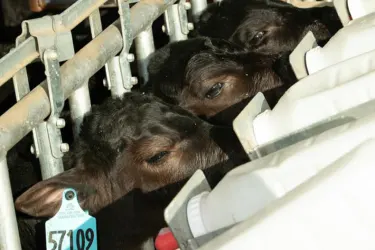Written by Mandy Schmidt for Progressive Dairy
The cost to raise a heifer from birth to freshening is hard to calculate. You don’t actually write a check for every replacement heifer expense.
[READ: Heifer Replacement Strategy]
Operating costs, such as feed, labor, breeding and health expenses are easiest to estimate. Proportional to the number of heifers raised, a 20% reduction in heifer numbers should correlate to a 20% expense reduction. Facilities, labor salary and benefits, utilities and equipment are more difficult to factor in, but are typically accounted for in budgets. If an accountant assists, he or she might include depreciation, owner unpaid labor, property tax, insurance and interest earned on money you could have invested elsewhere.
Most producers never calculate an actual number due to hidden opportunity costs. The opportunity cost of a decision is the difference in expected returns between two choices.
Three areas to consider opportunity cost implications on whole herd profitability are:
- Overcrowding versus recommended stocking density
- Extra heifer sales versus beef-on-dairy crossbred sales
- High cull rate versus cash flow positive herd
Are your facilities designed for the number of heifers you have?
Overcrowding effects are easily measured in lactating cows. Crowded pens equal reduced production, reproduction and health performance. We cannot easily measure how reduced comfort and inconsistent feed availability will affect heifers, but we can assume overcrowded facilities reduce youngstock performance. Reducing heifer numbers to what is reasonable for the facility should create healthier, faster-growing heifers.
Appropriate bunk space supports consistent feed intake across the entire group. Less competition results in fewer poor doers and overall higher rates of gain.
Heat detection and labor efficiency decrease when the heifers-to-headlocks ratio is not realistic. The more heifers in a pen, the less likely everything will get chalked. Breeding heifers faster results in heifers freshening and reaching their income earning phase more quickly.
Overcrowding can be detrimental to health and lead to higher disease rates. Unthrifty heifers removed from the herd before freshening need to be calculated into the replacement program budget as an investment loss. Heifers who make it to freshening need to cover their rearing costs, plus those who died or were sold at a loss.
Surplus heifers also create bottlenecks when large heifer groups freshen in a short time period. A consistent, managed number of heifers avoids spreading maternity pen resources too thin, which can cause transition disease incidents. Costs per case of mastitis, metritis or ketosis add up to hundreds of dollars in treatment costs and non-saleable milk.
Heifers are your best genetic animals, and a lot of resources go into rearing them. Don’t waste the investments you have made in time, money and genetics. Negative youngstock environments will limit future genetic expression and performance post-freshening.
[READ: Strategies for Genetic Progress]
What is your marketing plan?
Using sexed semen and having a strong reproductive program provides an opportunity to create extra calves. You can choose to generate surplus heifers or beef-on-dairy crossbred calves, depending on your marketing plan.
Replacement heifer prices are unreliable. Regardless of sale age, you will sink a lot of money into excess heifers before offloading. It is rare to find a point in the heifer growth cycle to sell where you receive your rearing investment back in full.
Many producers optimistically estimate their heifer rearing costs range from $1,400 to $1,800. But, after thoroughly reviewing inputs, the numbers are often between $2,000 and $2,600. Where does that leave you when selling extra heifers? The cost to sell 10% -20% of replacements at a loss doesn’t pencil. Even if you are selling your worst heifers, it is not economically sustainable.
For example, selling twenty extra heifers per month at a conservative $300 loss per head is a monthly loss of $6,000. Instead, you could have created twenty beef-on-dairy crossbred calves with the “extra pregnancies.”
Beef-on-dairy crossbred-calf markets vary, but at least the market price will not be at a loss to your inputs. If your region’s market for day-old beef-on-dairy crossbred calves is $150 per head, that is a monthly gain of $3,000.
If you don’t have a market for day-old crossbred calves, reducing heifer numbers may open facility space and feed resources to raise crossbreds to 400 pounds. This has been a strong alternative market in most regions.
Make sure heifers in your program are genetically capable of paying back rearing costs. Only make replacements from your most profitable genetic lines. Be picky. You will raise genetic averages and future herd performance.
Which lactation group is cash flow positive?
Generally, mature cows are cash flow positive versus young cows. They have paid back rearing debt, are not designating as much feed towards growth and have higher production levels, equating to better income over feed costs.
Although first-lactation genetics should be better than mature-cow genetics, it takes time for them to reach full genetic potential. They are not yet contributing as the highest performers in your herd and are at least a lactation away from generating a full return on investment (Figure 1). Depending on inputs and average first-lactation production, cows break even on rearing expenses in one to two lactations. The goal should be to maintain as many healthy, productive cows as possible, who have paid off their rearing costs.

Thoughtlessly creating too many heifers will affect cash flow when cows in the income-earning phase of their lives leave the herd before reaching their full productive potential. Herds with surplus heifer levels often have inflated mature cow cull rates to make room for fresh heifers. Debt-free mature cows are replaced with herdmates in the red. This culling strategy leads to lost income.
A certain level of culling is necessary to maintain efficiency. Each herd has a unique ideal cull rate pending herd health, facilities and labor. However, culling above this ideal could cause a missed opportunity for the highest return on investment.
Planning for a mature herd requires a specific genetic strategy. Priority genetic traits may need to shift. Health, fertility and longevity should be heavily considered in your genetic plan.
[READ: Managing Reproduction]
Is your decision to manage one way costing you money in other ways?
In our businesses, we are often too close to day-to-day tasks. We become guilty of working in our business and not on our business. This prevents us from spending the time to step back and truly analyze alternative management strategies. Take an unbiased approach and a sharp pencil to opportunity costs in your heifer rearing budget.
An opportunity cost audit should start with an analysis of where the scarcest, or most costly, resources are being spent. For most dairies, those resources are labor and feed.
Where is an area these two resources are spent heavily without immediate return: raising replacement heifers.
Photo by Mike Dixon.
Mandy Schmidt. North American Dairy Genetic Services Specialist – ABS Global.
Originally published in Progressive Dairy.





